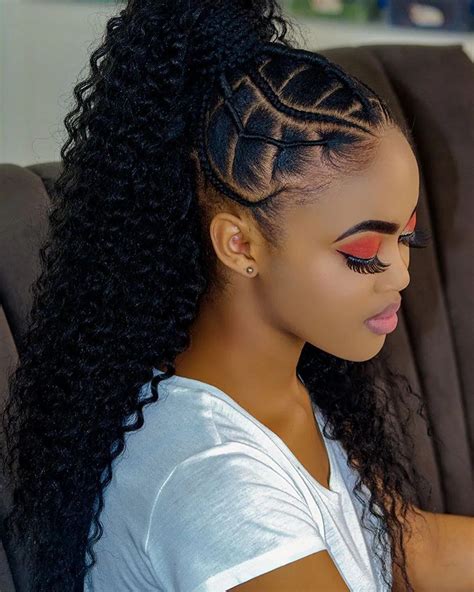With its versatility and timeless appeal, the natural hair ponytail is a staple hairstyle for women of all hair types. From sleek and sophisticated to bohemian and effortless, there’s a ponytail style to suit every occasion.

Understanding the Basics
What is a Natural Hair Ponytail?
A natural hair ponytail is a hairstyle where the hair is gathered and secured at the crown or nape of the neck, creating a tail-like effect. It differs from traditional ponytails, which may use extensions or tight elastics that can damage hair.
Benefits of a Natural Hair Ponytail
- Convenience: Ponytails are quick and easy to style, making them ideal for busy mornings or on-the-go situations.
- Versatility: Ponytails can be dressed up or down to suit different occasions, from casual outings to formal events.
- Haircare: Ponytails prevent hair from rubbing against clothing or pillows, reducing breakage and tangles.
- Detangling: Gathering hair into a ponytail can help remove knots and tangles, making brushing easier.
- Protective: Ponytails protect hair from environmental damage, such as sun exposure and windblown debris.
Choosing the Right Ponytail Style for Your Hair Type
- Straight Hair: Ponytails add volume and lift to straight hair, creating the illusion of fullness.
- Wavy Hair: Ponytails tame frizz and enhance natural waves, providing a polished and defined look.
- Curly Hair: Ponytails prevent damage by reducing friction and keeping curls intact.
- Coiled Hair: Ponytails protect delicate coils and prevent breakage at the root.
How to Style a Natural Hair Ponytail
- Section Your Hair: Part your hair into two sections, one at the crown and one beneath it.
- Tie the Top Section: Create a ponytail with the top section, leaving out a few strands to frame your face.
- Secure the Bottom Section: Gather the bottom section and tie it below the top ponytail, slightly offset to avoid bulkiness.
- Add Hair Accessories: Enhance your ponytail with hair clips, ribbons, or scarves to add a touch of style.
Common Mistakes to Avoid
- Overtightening: Pulling your hair too tightly can cause breakage and headaches.
- Using Harsh Elastics: Metal or rubber bands can damage hair, opt for fabric-covered or spiral elastics instead.
- Styling on Dry Hair: Brushing and tying hair when it’s dry can create frizz and breakage. Damp hair is more pliable and easier to style.
- Not Detangling: Make sure your hair is detangled before styling to prevent knots and breakage.
- Forgetting to Loosen: Regularly loosen your ponytail, especially if you’re wearing it for extended periods to prevent hair damage.
Pros and Cons of Natural Hair Ponytails
Pros:
- Convenient and easy to style
- Versatile and suitable for all occasions
- Protects hair from damage
- Detangles hair
- Promotes hair growth by preventing tangles and breakage
Cons:
- May become uncomfortable if worn too long or too tightly
- Can flatten out curly or coily hair
- Requires regular maintenance to prevent breakage
Tables for Quick Reference
Table 1: Ponytail Placement for Hair Types
| Hair Type | Placement |
|---|---|
| Straight | Crown or nape |
| Wavy | Crown or mid-head |
| Curly | Nape |
| Coiled | Nape or side |
Table 2: Hair Accessories for Ponytails
| Accessory | Effect |
|---|---|
| Hair Clips | Add style and secure stray strands |
| Ribbons | Create a feminine and elegant look |
| Scarves | Provide warmth and a touch of sophistication |
| Fabric Elastics | Prevent hair damage and add a touch of color |
Table 3: Detangling Techniques for Ponytails
| Technique | Benefits |
|---|---|
| Wide-Tooth Comb | Removes knots without damaging hair |
| Detangling Spray | Lubricates hair and makes combing easier |
| Finger Detangling | Gentle and prevents breakage |
| Denman Brush | Separates curls and tangles effectively |
Table 4: Signs of Ponytail Damage
| Symptom | Possible Cause |
|---|---|
| Hair Loss | Overtightening or using harsh elastics |
| Breakage | Excessive styling or using metal bands |
| Frizz | Styling on dry hair or using harsh products |
| Headaches | Wearing ponytails too tightly or for extended periods |
| Scalp Irritation | Allergies to hair products or buildup from elastics |
